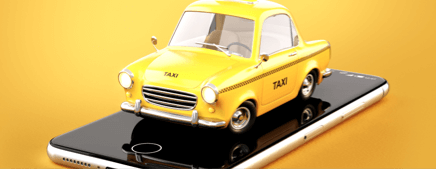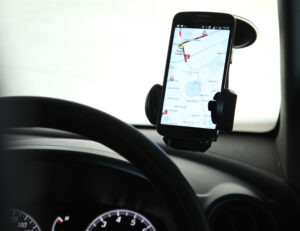Uber Business Model – Everything You Need to Know
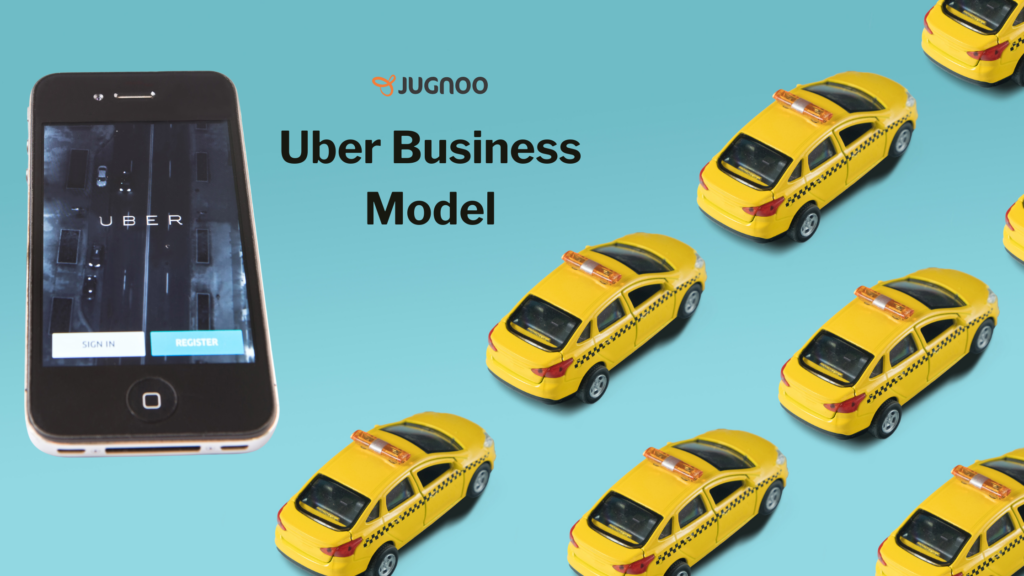
The Uber Business Model has successfully introduced the concept of on-demand ride-hailing to the world. With a whopping market cap of $41.90 Billion recently, the brand is geared to set some unexpected growth benchmarks for other players in the market.
Home-based in San Francisco, the brand has managed to earn the attention and respect of the market since its inception. From successful funding to growing evaluation, Uber has come a long way and is prepared to raise the competition in the coming times.
It has brought the much-needed revolution in the mobility industry and has led people to experience technology like never before.
Have you ever wondered, what makes Uber a unicorn and an inspiration for other startups to resonate their business ideas like them and create app like Uber?
Here is a small write-up explaining Uber’s working model and business strategy that has helped the business to turn into a global brand.
Uber Business Model – An introduction
The tech-oriented platform connects the drivers/cabs with the potential riders/customers. The multisided business platform has revolutionized the presence of urban transportation and has introduced the concept of doorstep rides to every possible corner of their operational area.
The feature-packed platform converts smartphones into a tool that helps instant ride search, booking, and navigation from a single app. We’ll be discussing more on app features in the below part.
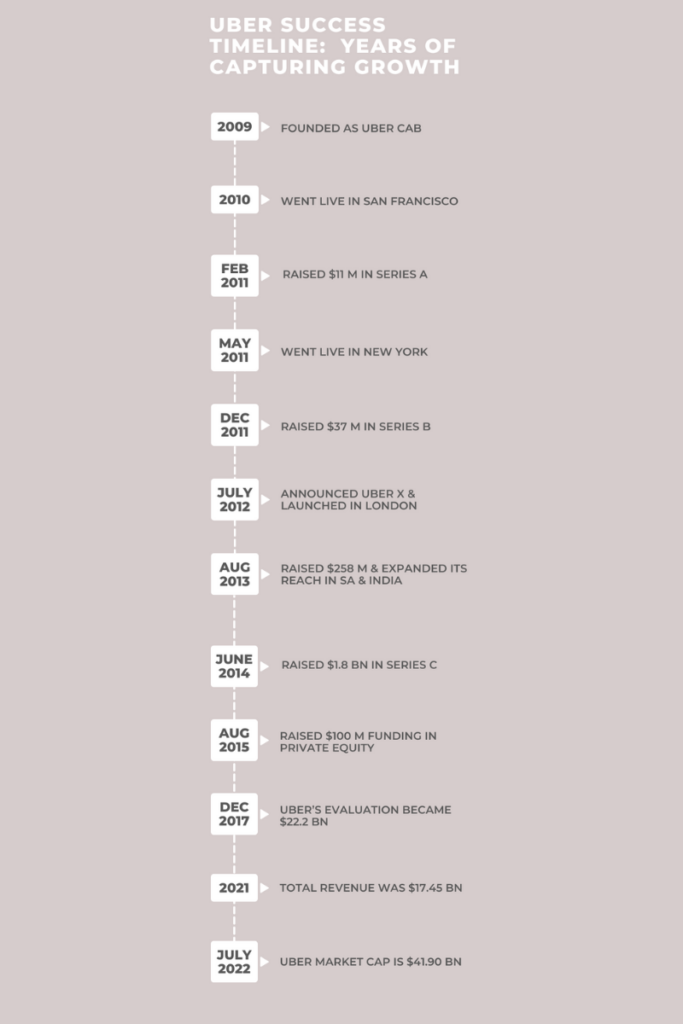
And the success story continues. Uber has undoubtedly created history and is all set to gear its growth by entering and conquering the other market segments too.
Uber Eats and Uber Freight are the two most significant segments where Uber has outreached its potential customers.
Taskforce behind Uber: A brief history
Founded in 2009, Uber was formerly known as Uber cab. The company was backed under the guidance of its founders: Garrett Camp, Oscar Salazar & Travis Kalanick, and had started its operations initially in the USA.
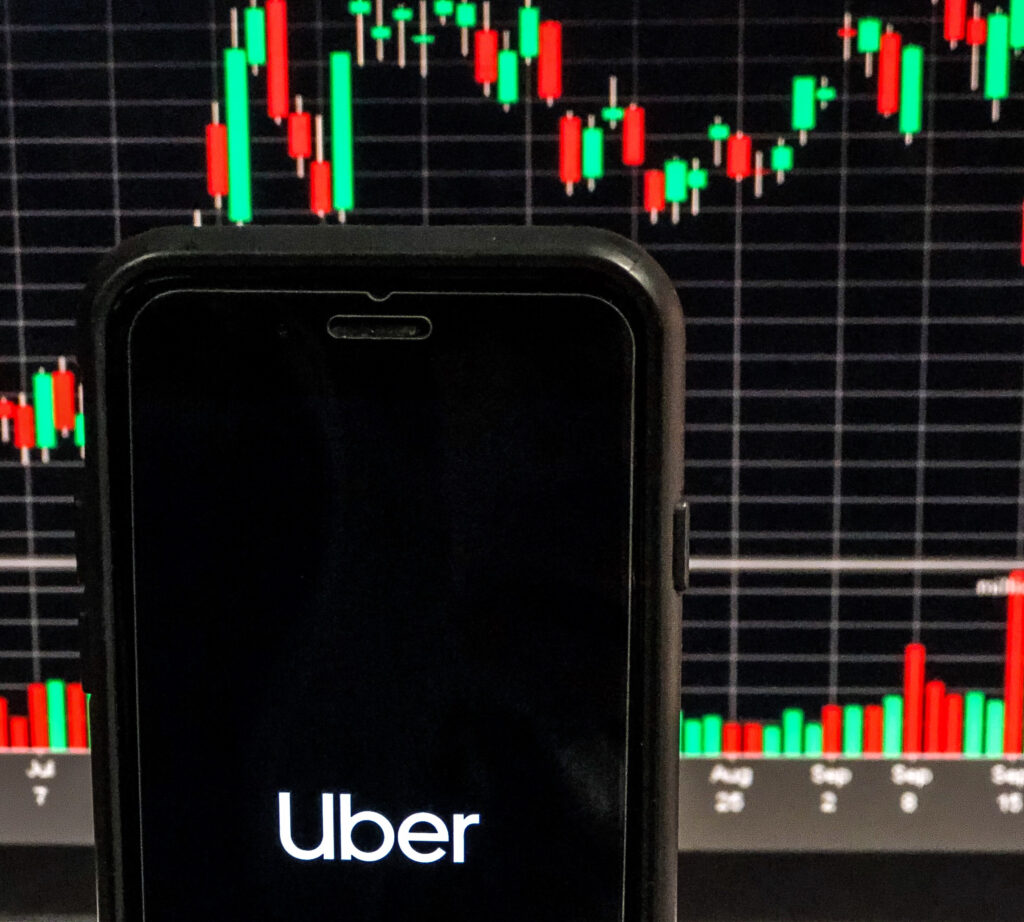
With a whopping success of around 67% of market share growth, Uber managed to charm its potential audiences and become a renowned name by 2019.
Uber has been known to stay flexible and open to experimenting and entering different segments. After the first-ever national expansion in 2011, the business had managed to operate in more than 72 countries as of now.
Surprisingly, Uber had gained momentum in its food delivery services under the name of Uber Eats and has managed to acquire 24% of growth in the food delivery sector by 2018.
Fast forward, the business is now experimenting with its add-on services such as Uber Eats (which focuses on food delivery), and Uber Freight (which focuses on logistics). In the most recent advancements, Uber is all set to make new developments in the field of self-driving cars.
What is Uber Business Model?
You might be wondering what magic Uber creates in the market to rapidly capture the potential market and generate a bigger ROI with every initial investment. Here is the key to it.
Post pandemic, the business model has changed significantly. The structural changes were made to make sure the present business model accommodates the need of the hour.
The platform has been divided into two major segments:
- Mobility Platform: It grew at a rate of 14.2%. The figures themselves explain why Uber shifted its existing business model and how significantly it can lose if this shift had not happened. However, the platform still runs at positive profit margins and has generated $1.59 billion in revenue; even during the pandemic.
- Delivery Platform: With a growth rate of 114%, the platform becomes an instant hit during and after the pandemic. The consolidated business model has been known to offer doorstep deliveries of essentials to the customers as per their requirements.
Different Segments of Uber
Uber’s segments can be classified into riders and drivers. For first-time readers, drivers are the individuals who own the cars and riders are those categories of individuals who are looking for a ride as they don’t have or want to travel in their own car.
Both the segments are known as potential customers for Uber. The Uber business model works under a fixed and variable commission model.
Things that make Uber different from others
Here are the major value propositions of the business and reasons why Uber is preferred globally as the number one ride-hailing business model.
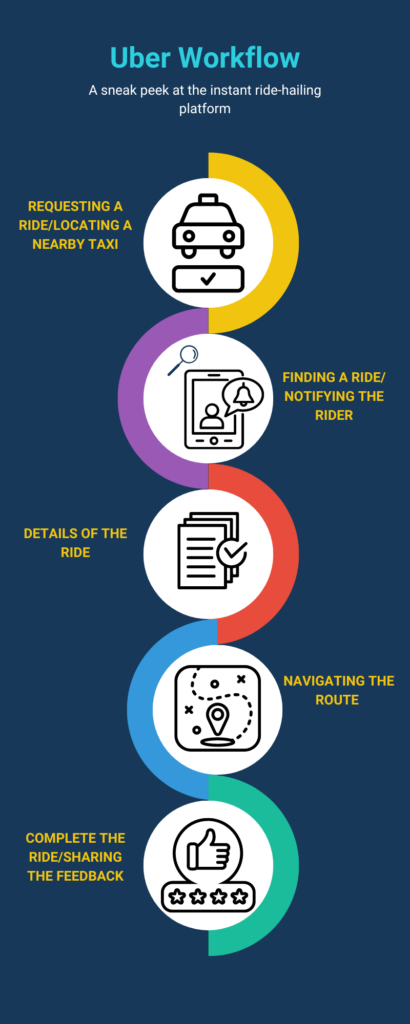
Uber’s workflow remains seamless and hassle-free to all its riders as well as drivers. As soon as a rider needs a ride, he can process the request on the app. The nearby driver will be notified of the same. If the driver accepts the ride, the vehicle and driver details are shared with the client. Post the completion of the ride, the rider can process the digital payments and can leave a feedback or review for the driver.
This simple workflow can be customized or white-labeled as per your business requirements.
Uber Revenue Model: How does Uber generate revenue?
A well-structured marketplace has in-built processes to allow the brand to push two-sided growth with ease. The concept becomes more concise when Uber keeps on gaining profit by adding new drivers or riders to its expanding platform.
The profit becomes bigger with the addition of others joining the next. The better productivity of the drivers and the positive reviews of the drivers on the platform plays a vital role in ensuring that Uber keeps on increasing its revenue. The more efficiency Uber gains with matching the algorithm of demand and supply, offering quick pickups to riders, there are more chances to generate better revenue.
In a nutshell, Uber leverages the impact of Liquidity Network Effects and keeps on aiming to broaden and outreach more potential customers to bring more and more revenue to the business.
The commission-based pay model has been an instant hit among the drivers, and regulators in Uber. The added incentives offers and discounts also play a key role in capturing more attention and interest of the drivers and riders to opt for Uber as their next on-demand ride-hailing platform.
Here is a category wise classification of how Uber makes money and generates a profitable revenue.
- Uber’s mobility segment comprises Uber Rental, Uber Green, Uber Go, Uber Pool, and Uber Transit. Around 20% of total trip revenue goes with Uber as commission and the rest 80% remains with the driver. As of now, 39% of total Uber revenue comes from Uber’s mobility segment.
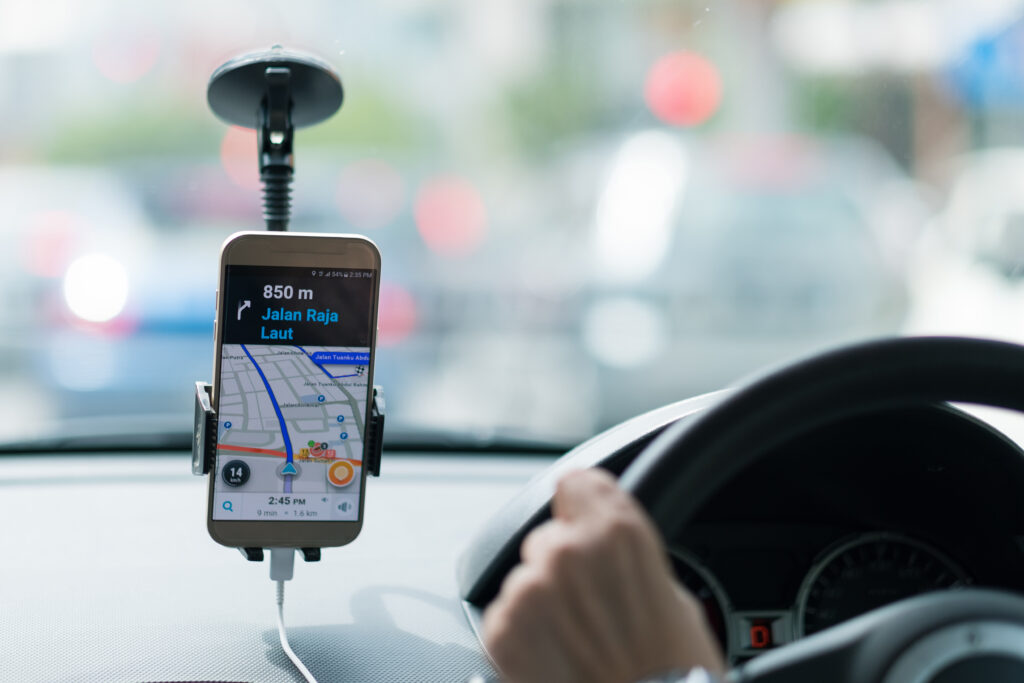
2) Uber’s Delivery Segment is growing approx with 55% of growth ($3.9 Bn in 2020) with high YoY growth. Around 42% of total Uber revenue comes from Uber Eats, making it one of the key essential segments in terms of revenue.

3) Uber’s Freight Segment made just $1 Bn in 2020 and is on a verge of growing and expanding its reach with passing time. As the reports suggest, almost 19% of the total revenue of business comes from this segment.
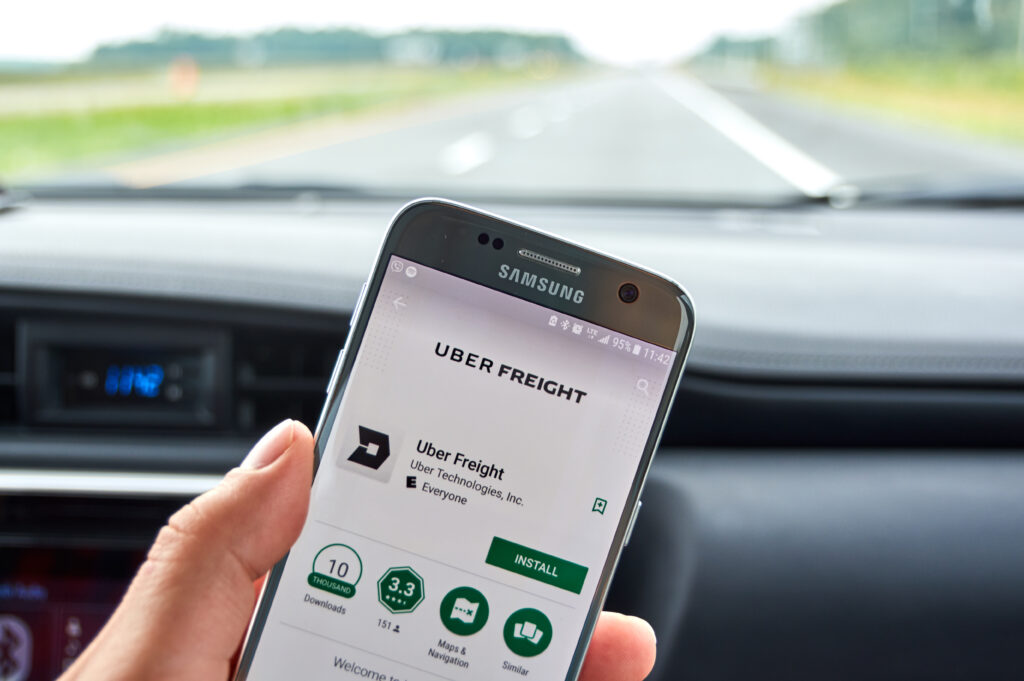
Source: link
Uber’s Marketing Strategy
Everyone is aware of the negative news that Uber has faced over the past few years. Class action lawsuits, severe driving violations, price shocks due to surges, legal disputes with governments — the list is endless. The ride-hailing service continues to expand in spite of this. How come? They provide an engaging and popular product, for starters. Second is Uber’s multifaceted and creative loyalty marketing strategy. Let’s examine some of the initiatives and strategies that have contributed significantly to the expansion of the $62.5 billion firm.
1) Word of Mouth Advertising
For Uber, word-of-mouth advertising has been crucial. The corporation originally promoted it by locating influential people in Silicon Valley and persuading them to support the brand. Uber also targeted them by sponsoring events, offering first-time riders a free trial, and adopting a hyper-local strategy that shifts with each new city the company enters. While many techies are constantly looking for new products and services that transform their ways of life, Uber also took aim at them.
2) Understanding their Customer Base
Be aware of your target market. Although it may seem simple, it is a basic truth that companies must understand their target market in order to effectively promote them. Uber is used by people of all ages, but millennial smartphone users are its biggest fans. Uber also recognized the importance of marketing to both their drivers and passengers.
Another illustration is how Uber operated during the pandemic when countless restaurants and small businesses closed. Uber highlighted their food delivery service, Uber Eats. With their campaign #GratefulUK, they went even further to recognize and applaud the efforts of frontline healthcare staff. They provided free transportation and meals for medical personnel. Uber was able to develop efficient, cutting-edge marketing techniques to fulfill the requirements of both its riders and their drivers because they had a thorough understanding of both groups of individuals.
3) Cleverly Teaming Up With Powerful Partners
They formed relationships with organizations like Capital One, Spotify, and Starwood Hotels, which helped raise brand awareness.
Customers of Capital One Banking receive discounts for their Uber rides, Spotify subscribers can connect their accounts while traveling in an Uber car, and Starwood Hotels members can receive hotel discounts for each Uber ride. Users of Capital One, Spotify, and Starwood Hotels who may not have yet been Uber customers were encouraged and rewarded with discounts and advantages, while those who were not yet Uber customers were persuaded to adopt the ride-sharing service.
4) A Distinctive Review System
Uber established a distinctive strategy for reviews. Drivers could also evaluate and review passengers in addition to passengers rating and reviewing their drivers. By creating a two-way relationship, Uber as a whole was more widely trusted than merely the reputation of the driver or the passenger. Making it possible for drivers to rank and review their customers increased the appeal of becoming an Uber driver. It streamlines the process for everyone concerned and establishes Uber as a reliable brand.
5) Delighting Customers
Groups of millennials cheer whenever Uber introduces a new promotional offer. The business occasionally sends kittens to workplaces, and on other occasions, it arranges rides for customers to ride with well-known bands like Diplo or Matt & Kim. These thrilling “surprise and delight” strategies serve to gratify devoted consumers, create good talk, and offer Uber a more enjoyable and approachable image—something it frequently lacks in comparison to rival Lyft.
6) Discounts to Attract New and Retain Existing Customers
The creators of Uber developed a reimagined concept and started trying advertising strategies. Yes, they certainly developed creative marketing efforts, but they also recognized the importance and power of practical approaches. Offering discounts was one of these overt marketing techniques. Uber attracted their target audience by giving new customers free rides and discounts. They went a step further and added an Uber Loyalty Program, a mechanism that enables regular users to accumulate points with each ride and use those points to obtain Uber Cash and other advantages. With the use of this approach, Uber was able to both acquire and keep clients.
Demographics
Although the concept for Uber was first conceived in Paris in 2008, the company’s first ride was in San Francisco. The Uber headquarters is still there today.
Uber’s revenue is primarily derived from the US and Canada, with those two nations accounting for $10 billion of the $17.4 billion in 2021 revenue.
The idea for Uber was conceived in Paris three years prior to their start there with their first international journey in 2011.
Uber started to roll out in additional cities throughout the world over the following few years.
- 2012 — London, United Kingdom
- 2013 — Mexico City, Mexico
- 2013 — Taipei City, Taiwan
- 2013 — Johannesburg, South Africa
- 2013 — Bangalore, India
- 2014 — Beijing, China
- 2014 — Lagos, Nigeria
- 2015 — Nairobi, Kenya
The list goes on and on. Uber began penetrating markets in every corner of the world.
Value props for Riders:
1) Round-the-clock availability of cars
To begin with, Uber has the highest value in offering round-the-clock availability of cars. This goes well in the on-demand revolution of the mobility market and extends the support of offering doorstep ride-hailing facilities.
2) Genuine fares for your upcoming travel
Unlike the conventional taxi players who charge unfairly for travel, Uber play fair in the market. The charges are genuine and are easy to justify based on the overall services offered to its customers.
3) Hassle-free onboarding of a ride
From locating a perfect ride to making sure the ride is availed with great ease, the customers can expect convenience with Uber.
Value Props For Drivers:
1) Find customers easily
Drivers can connect with their potential customers and can start earning without any stress. The seamless interface of Uber helps drivers to find their riders.
2) Get end-to-end navigation
Uber helps drivers to reach the desired destination without wasting time and effort. The end-to-end navigation helps in choosing the optimal route and saves extra miles on travel to reach the customers.
3) Seamless daily earnings
Lastly, the Uber business model also helps the drivers in getting started with their daily earnings. As soon as the driver gets enrolled in the portal, he can get started with the earnings.
And many more.
Uber’s Competitors in the market – A sneak peek
Uber has raised the curiosity level of many other startups who are striving to make an impact in the mobility industry. However, a handful of them has managed to give a tight competition to Uber and its processes.
In this section, we have curated the list of the top few competitors who might be a potential danger to the brand.
Lyft: Founded in 2012 in San Francisco by Logan Green and John Zimmer, the ride-hailing business has been a tough competition for Uber. Working on a similar work model, the supported app allows the riders to map and pinpoint their location on the map. The brand has gained popularity over the years and is currently operating in more than 220 cities.
Ola Cabs: This Indian-based startup has been founded by Bhavish Aggarwal in 2010. With its fastest-growing business use case, the brand is active in more than 169 cities so far. Ola has been a direct competitor for Uber and has been on an edge in the market by offering a varied range of cars to its riders; based on their preferences and requirements.
Didi: Popularly known as “Uber of China”, the business has been active since 2012, with its home base in Beijing, China. Founded by Wei, the brand has been doing the grounds through smart partnerships with other operating cabs models globally.
And the list continues.
Preliminary challenges Uber faced while starting and executing its launch in the market
Getting the Drivers: Though Uber pays an 80% commission to its drivers but still finding and on-boarding the drivers was the biggest challenge that the business faced in its initial stages. The prime reason behind it could be the newness of the concept which might take some time to win the confidence of drivers.
High Attrition Rate: Instead of flexibility in work, high commissions, and being the boss strategy – Uber faces a high driver attrition rate. The fluctuating gas prices, the long distances required to reach the customer, and loaded ride requests could be one of the reasons to drive a high attrition rate in the brand.
Getting Banned from various areas: Though Uber has been expanded to global areas, still there are some demographic areas where Uber had or is facing a ban. There could be external as well as internal factors that can be possible for the ban.
Narrow Margins & high competition: Since the inception of its operations, Uber faced the high voltage of very narrow margins and tough competition in the market.
The final wrap-up
Consider this write-up as your preliminary guide to know more about Uber and its work ethos. If you are into the mobility industry and passionate enough to get started with your own venture, feel free to connect with our experts.
We are a team of experts who have been helping various mobility businesses to position their brands rightly in front of their target audiences. You can ask for your own Uber-like App and get started in no time.

